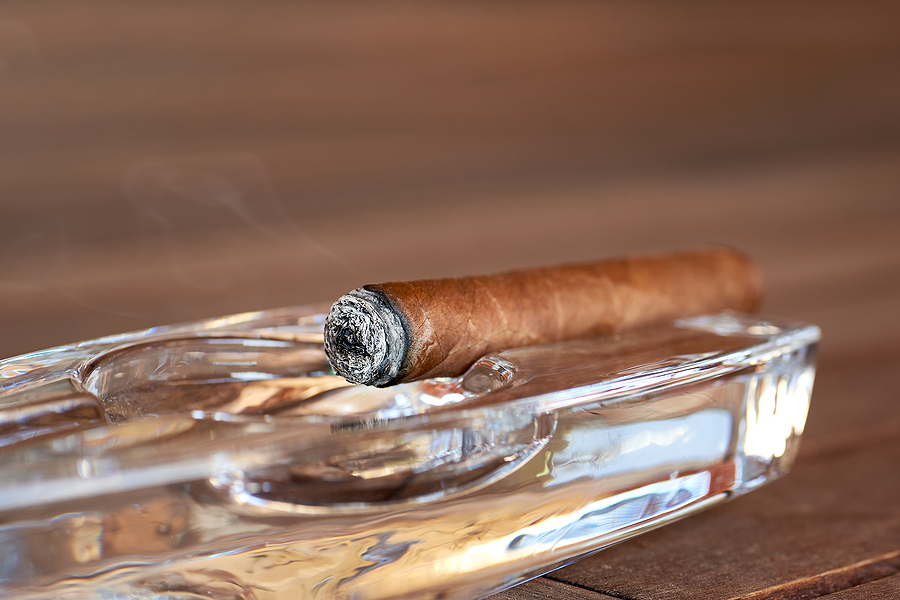The Centers for Disease Control and Prevention recently published the 2021 Youth Risk Behavior Survey (YRBS) results. From diets and physical activity to substance use and sexual and mental health issues, the biennial survey tracks various U.S. high school students’ behaviors. There is welcome news for adults who enjoy cigars and public health agencies and organizations wanting to thwart youth cigar use. In 2021, the percentage of youth using cigars reached a record low.
Despite these dramatic declines, state and federal lawmakers and the Food and Drug Administration continue to push for draconian bans that would outlaw the legal sale of cigar products to adults.
In 2021, among U.S. high school students, 3.1 percent reported using cigars (defined as having used the product on at least one occasion in the 30 days prior). Further, 0.6 percent reported using them frequently (defined as using 20 or more days in the 30 days prior), and 0.5 percent had used them daily.
These are some of the lowest levels recorded regarding youth cigar use.
In 1999 (the first year the YRBS began monitoring youth cigar use), 17.7 percent of U.S. high schoolers were using cigars, 1.6 percent were frequently using them, and 1.1 percent were using them daily. Between 1999 and 2021, current cigar use declined by 82.5 percent, frequent use by 62.5 percent, and daily use by 54.6 percent. Cigar use has declined in recent years, as well. Between 2019 and 2021, current use dropped by 45.6 percent, frequent use by 45.5 percent, and daily use by 37.5 percent.
The findings are similar to other national surveys. According to the National Youth Tobacco Survey, only 1.9 percent of U.S. middle and high school students reported current use of cigars in 2022.
In May 2022, the FDA proposed a new product standard that would ban characterizing flavors in cigars. The agency purported that the ban “would reduce the appeal of cigars, particularly to youth and young adults” and that the “FDA is taking this action to reduce the tobacco-related death and disease associated with cigar use.”
The FDA issued this proposed rule in 2022 — a year after youth use of cigars hit record lows, regardless of widely available flavored cigars. But, even the proposed rule notes the differing types of cigar products. In determining whether a cigar would be prohibited, the FDA will examine the “presence and amount of artificial or natural flavor additives, compounds, constituents, or ingredients, or any other flavoring ingredient.”
Cigars are a broad tobacco product category and generally include large cigars, little cigars and cigarillos. Large cigars usually entail “premium hand-rolled cigars and machine-made large cigars.” Little cigars are similar to cigarettes in shape and size, often including a filter. Cigarillos are typically similar to little cigars — but with no filter.
Unfortunately, the YRBS and NYTS classify all cigars into one category. The national Monitoring the Future (MTF) survey does monitor the current use of large and flavored small cigars and past-year use of cigarillos. In 2021, according to the MTF, 1.5 percent of U.S. middle and high school students reported the use of flavored little cigars, and 1.6 percent had used large cigars. Between 2014 (the first year the MTF monitored cigar use) and 2021, the use of flavored little cigars declined by 74 percent and the use of large cigars by 61.5 percent.
A ban on characterizing flavors in cigars fails to recognize the significant declines in youth use of all types of cigars, but it is also unlikely to lead to significant improvements in public health as cigar use is not associated with the health ailments that combustible cigarette use is. Cigarettes are known to cause “cancer, heart disease, stroke, lung diseases, diabetes” and other ailments.
A 2021 study in the Harm Reduction Journal found that “exclusive male cigar (users) age 40 plus years had no statistically significant increased mortality from all causes, heart diseases … smoking-related diseases or other causes.”
Ironically enough, cigars (regardless of type) are subject to FDA user fees, which are the only funding source for the FDA’s Center for Tobacco Products, which regulates all tobacco products, from cigars to cigarettes to vapor products.
In fact, in fiscal year 2023, the FDA collected more than $720 million in user fees from cigars, the second largest revenue-generating product category (after cigarettes’ nearly $4.2 billion) from which the agency collected fees. While cigarettes account for 83.6 percent of the Center for Tobacco Products’ user fee allocation by product category, cigars (including those with characterizing flavors) made up 14.4 percent.
Public health agencies and organizations should celebrate these significant declines in youth cigar use. Prohibition is never a good policy, and it is a ridiculous effort to put forward, given the epic low in youth use of all cigar products.


